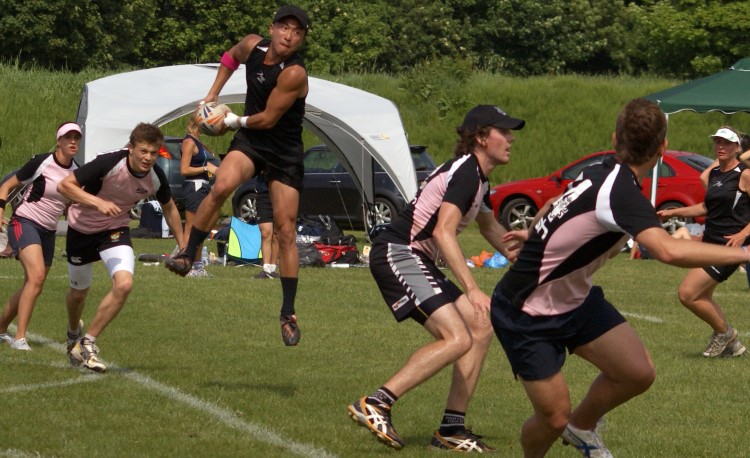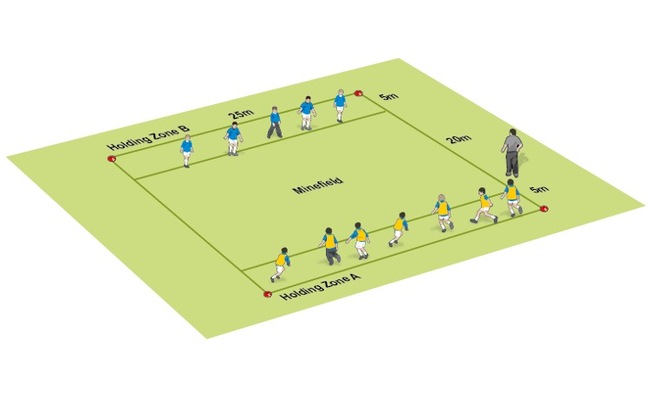Get the full benefits from playing touch rugby
Running
In touch rugby, players will tend to run sideways more. Since they cannot “bust through” the line, they look for gaps by shifting across the defence. Defenders are not therefore committed. This reduces the chances of creating gaps because defenders are not taken out of the game.
Tactical requirement: Commit defenders by running straight.

Passing
With more time on the ball, it seems that touch rugby promotes the use of the huge miss pass, perhaps cutting out two or three attacking players. In many cases, this is not difficult to defend against. The defence can easily slide across.
In the full-on game, it is rare that these passes have much effect unless there are dummy runners and strike runners coming on to the ball.
Tactical requirement: Commit defenders by fixing and passing.
Switching (cut pass)
With all the runners tending to stand flat and the ball carrier running sideways, switch passes and dummy switch runs become a feature.
This rarely creates space – the switch takes the ball back towards trouble and there are fewer players left to pass to if the dummy switch is used.
A number of experts see these switches as “lazy support”, offering little in the way of positive outcomes, commensurate with the effort of making the run in the first place.
Tactical requirement: Create overloads (more attackers than defenders) by looping after passing, rather than runners looking for switch passes.
When to switch in touch rugby
A switch pass in touch rugby is probably best left to the wing man and his inside man. It brings the ball back into play and helps prevents running into touch.
Width and spacing
In attack, touch rugby players revert to almost military specific spacing. Each player is equidistant from the last and the defence can easily space itself to counter. They also do not spread out to the ends of the pitch.
Tactical requirement: Use the whole width of the pitch. This means wing men on both ends of the line standing close to the touchline. The other players should be constantly adjusting their spacing. Running lines will then be more varied.
This article originally appeared in Rugby Coach Weekly.
Thank you for reading
to enjoy 3 free articles,
our weekly newsletter, and a free coaching e-book
Or if you are already a subscriber, login for full access
Newsletter Sign Up
Coaches Testimonials

Gerald Kearney, Downtown Las Vegas Soccer Club

Paul Butler, Florida, USA

Rick Shields, Springboro, USA

Tony Green, Pierrefonds Titans, Quebec, Canada
Subscribe Today
Be a more effective, more successful rugby coach
In a recent survey 89% of subscribers said Rugby Coach Weekly makes them more confident, 91% said Rugby Coach Weekly makes them a more effective coach and 93% said Rugby Coach Weekly makes them more inspired.
Get Weekly Inspiration
All the latest techniques and approaches
Rugby Coach Weekly offers proven and easy to use rugby drills, coaching sessions, practice plans, small-sided games, warm-ups, training tips and advice.
We've been at the cutting edge of rugby coaching since we launched in 2005, creating resources for the grassroots youth coach, following best practice from around the world and insights from the professional game.













